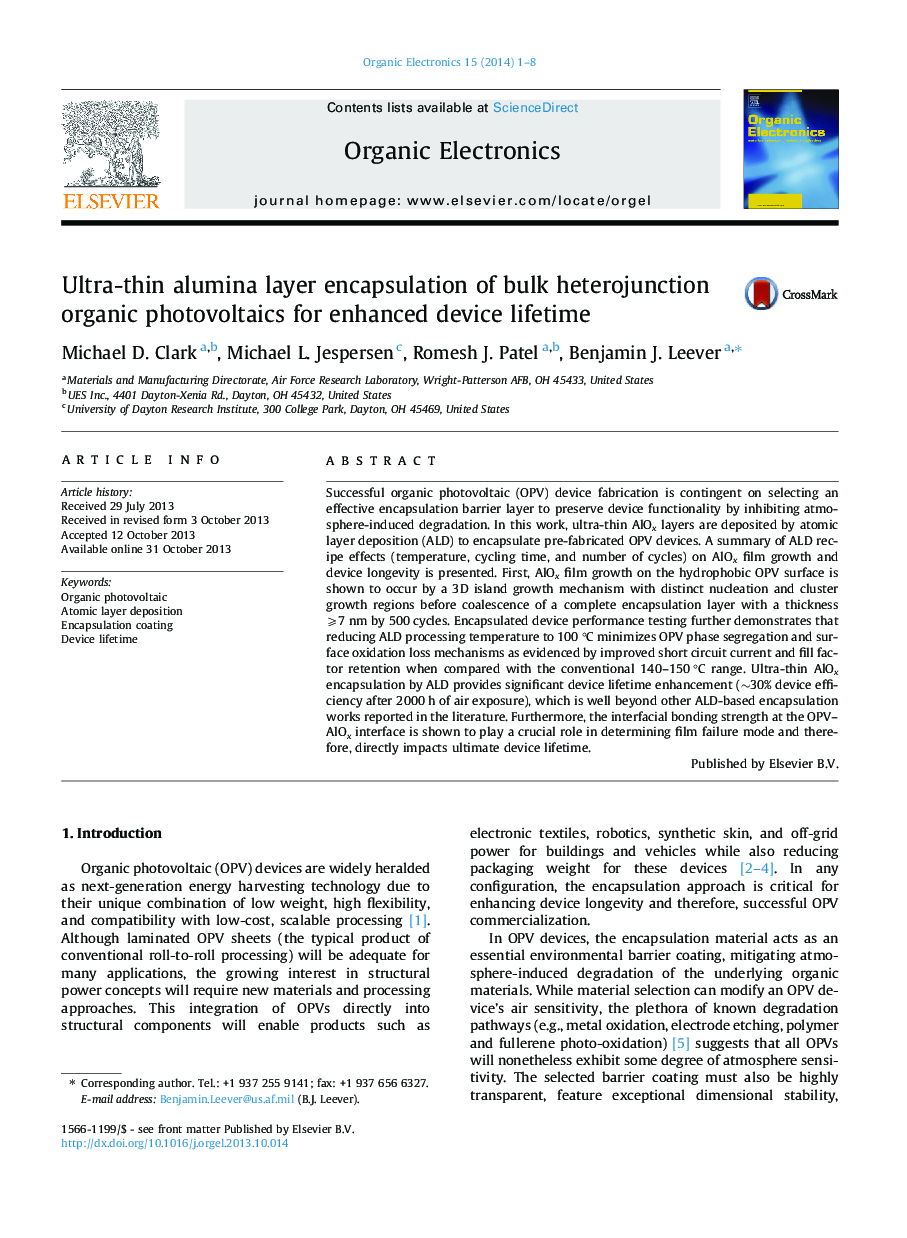| کد مقاله | کد نشریه | سال انتشار | مقاله انگلیسی | نسخه تمام متن |
|---|---|---|---|---|
| 1263843 | 972083 | 2014 | 8 صفحه PDF | دانلود رایگان |
• ALD recipe effects on OPV functionality and device lifetime quantitatively evaluated.
• AlOx deposition on OPV surfaces proceeds by a 3D nucleation and growth mechanism.
• Ultra-thin AlOx layers extend lifetimes up to 3 months without sacrificing device performance.
• Ultimate device failure caused by hydrolysis-induced delamination at AlOx interface.
Successful organic photovoltaic (OPV) device fabrication is contingent on selecting an effective encapsulation barrier layer to preserve device functionality by inhibiting atmosphere-induced degradation. In this work, ultra-thin AlOx layers are deposited by atomic layer deposition (ALD) to encapsulate pre-fabricated OPV devices. A summary of ALD recipe effects (temperature, cycling time, and number of cycles) on AlOx film growth and device longevity is presented. First, AlOx film growth on the hydrophobic OPV surface is shown to occur by a 3D island growth mechanism with distinct nucleation and cluster growth regions before coalescence of a complete encapsulation layer with a thickness ⩾7 nm by 500 cycles. Encapsulated device performance testing further demonstrates that reducing ALD processing temperature to 100 °C minimizes OPV phase segregation and surface oxidation loss mechanisms as evidenced by improved short circuit current and fill factor retention when compared with the conventional 140–150 °C range. Ultra-thin AlOx encapsulation by ALD provides significant device lifetime enhancement (∼30% device efficiency after 2000 h of air exposure), which is well beyond other ALD-based encapsulation works reported in the literature. Furthermore, the interfacial bonding strength at the OPV–AlOx interface is shown to play a crucial role in determining film failure mode and therefore, directly impacts ultimate device lifetime.
Figure optionsDownload as PowerPoint slide
Journal: Organic Electronics - Volume 15, Issue 1, January 2014, Pages 1–8
